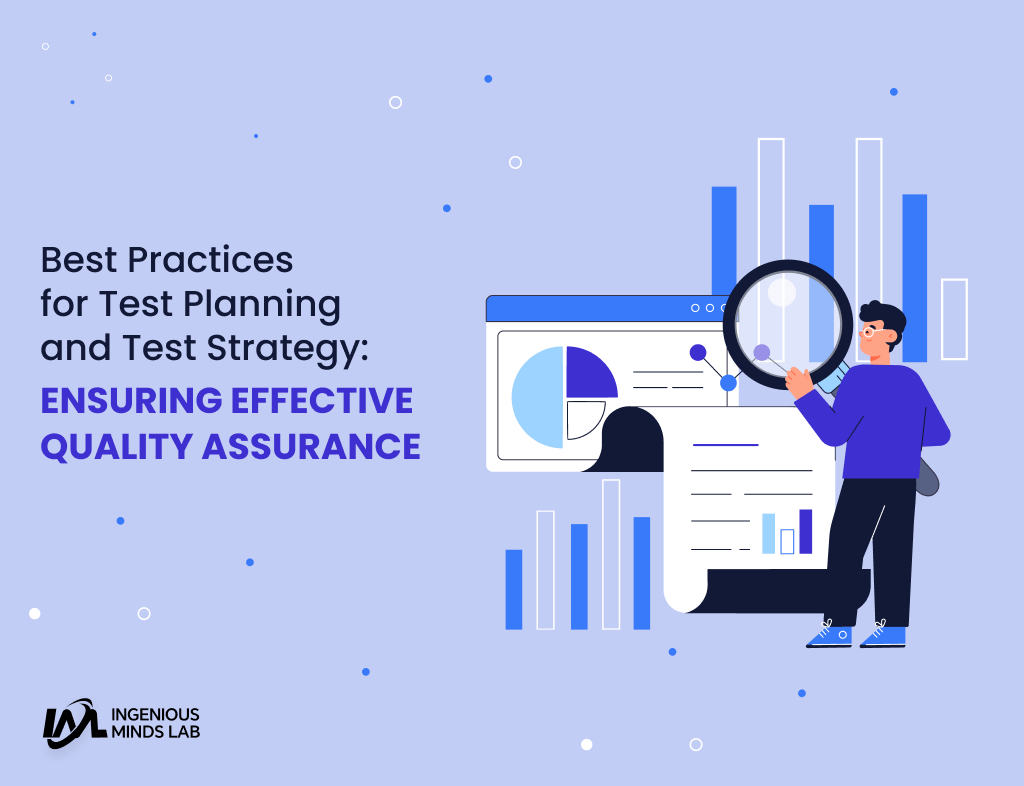Introduction:
Test planning and test strategy are crucial components of the quality assurance (QA) process in software development. Proper planning and strategy help ensure comprehensive test coverage, efficient resource utilization, and effective risk management. In this blog post, we will delve into the best practices for test planning and test strategy, providing insights and guidelines for QA professionals to create robust and successful testing frameworks. In this post Learn the best practices for test planning and test strategy to ensure the quality of your software products.
1. Best Practices for Test Planning and Test Strategy 1 -: Understanding Test Planning and Test Strategy:
- Define test planning and test strategy and their significance in QA.
- Highlight the objectives of test planning and strategy, such as identifying test objectives, determining test scope, and allocating resources effectively.
- Emphasize the need for proactive and well-structured planning to maximize testing efficiency and effectiveness.
2. Best Practices for Test Planning and Test Strategy 2-: Collaboration and Communication:
- Stress the importance of collaboration between QA, development, and business stakeholders during test planning.
- Discuss techniques, such as meetings, workshops, and documentation, to foster effective communication and align testing goals with project objectives.
- Emphasize the value of gathering requirements and clarifying expectations from all stakeholders to ensure comprehensive test coverage.
3. Best Practices for Test Planning and Test Strategy 3 -: Defining Test Objectives and Scope:
- Guide QA professionals on how to define clear and measurable test objectives.
- Explain the significance of aligning test objectives with project goals and customer expectations.
- Discuss techniques, such as requirement analysis, risk assessment, and prioritization, to determine the appropriate test scope and prioritize testing efforts.
4. Best Practices for Test Planning and Test Strategy 4 -: Test Estimation and Resource Allocation:
- Explain the process of test estimation, including effort estimation, task breakdown, and resource allocation.
- Discuss techniques, such as historical data analysis, complexity assessment, and expert judgment, to estimate testing efforts accurately.
- Highlight the importance of allocating resources effectively to ensure optimal test coverage within project constraints
5. Best Practices for Test Planning and Test Strategy 5 -: Test Design Techniques:
- Explore various test design techniques, including black-box testing, white-box testing, boundary value analysis, and equivalence partitioning.
- Explain the strengths and weaknesses of each technique and provide guidance on selecting the appropriate technique based on the project requirements.
- Discuss the importance of designing test cases that are traceable, reusable, and maintainable.
6. Best Practices for Test Planning and Test Strategy 6 -: Risk-Based Testing Approach:
- Introduce the concept of risk-based testing and its significance in prioritizing testing efforts.
- Explain how to identify and assess project risks to determine the critical areas that require extensive testing.
- Discuss techniques, such as risk matrices, risk-based test prioritization, and risk mitigation strategies, to effectively implement risk-based testing.
7. Best Practices for Test Planning and Test Strategy 7 -: Test Environment and Test Data Management:
- Discuss the importance of establishing a reliable and representative test environment.
- Highlight best practices for test environment setup, including hardware and software configurations, version control, and data isolation.
- Explain the significance of managing test data effectively, including data generation, data privacy considerations, and data sanitization techniques.
8. Best Practices for Test Planning and Test Strategy 8 -: Test Execution and Defect Management:
- Guide QA professionals on structuring and executing test cases effectively.
- Discuss techniques for test execution, including manual testing, test automation, and exploratory testing.
- Highlight the importance of efficient defect management, including defect tracking, reporting, and resolution, to ensure timely resolution of issues.
9. Best Practices for Test Planning and Test Strategy 9 -: Test Reporting and Metrics:
- Explain the importance of test reporting in providing insights on testing progress, test coverage, and defect trends.
- Discuss essential metrics, such as test case coverage, defect density, and defect leakage rate, for evaluating testing effectiveness.
- Emphasize the significance of continuous improvement and the use of metrics to drive actionable insights for enhancing testing processes.
